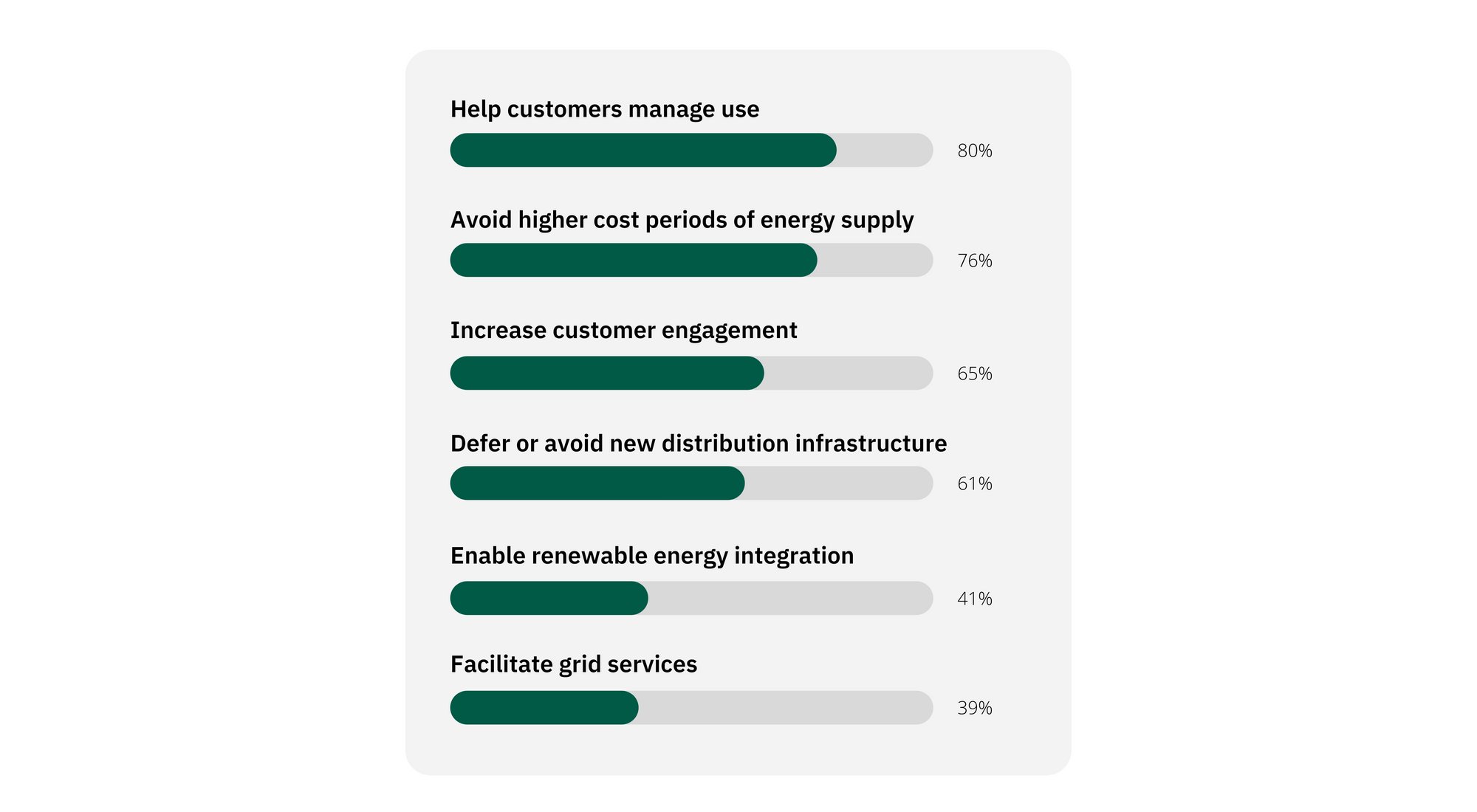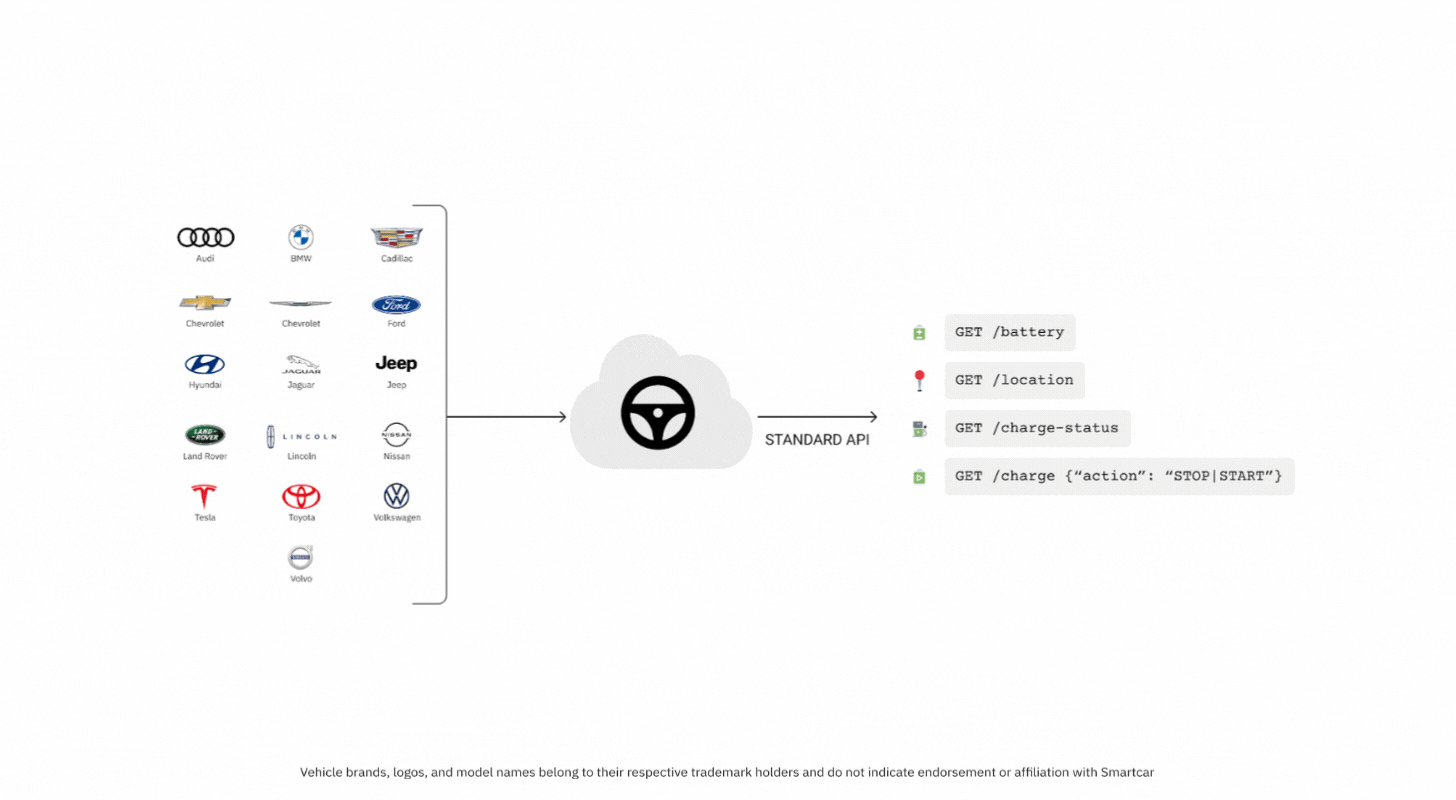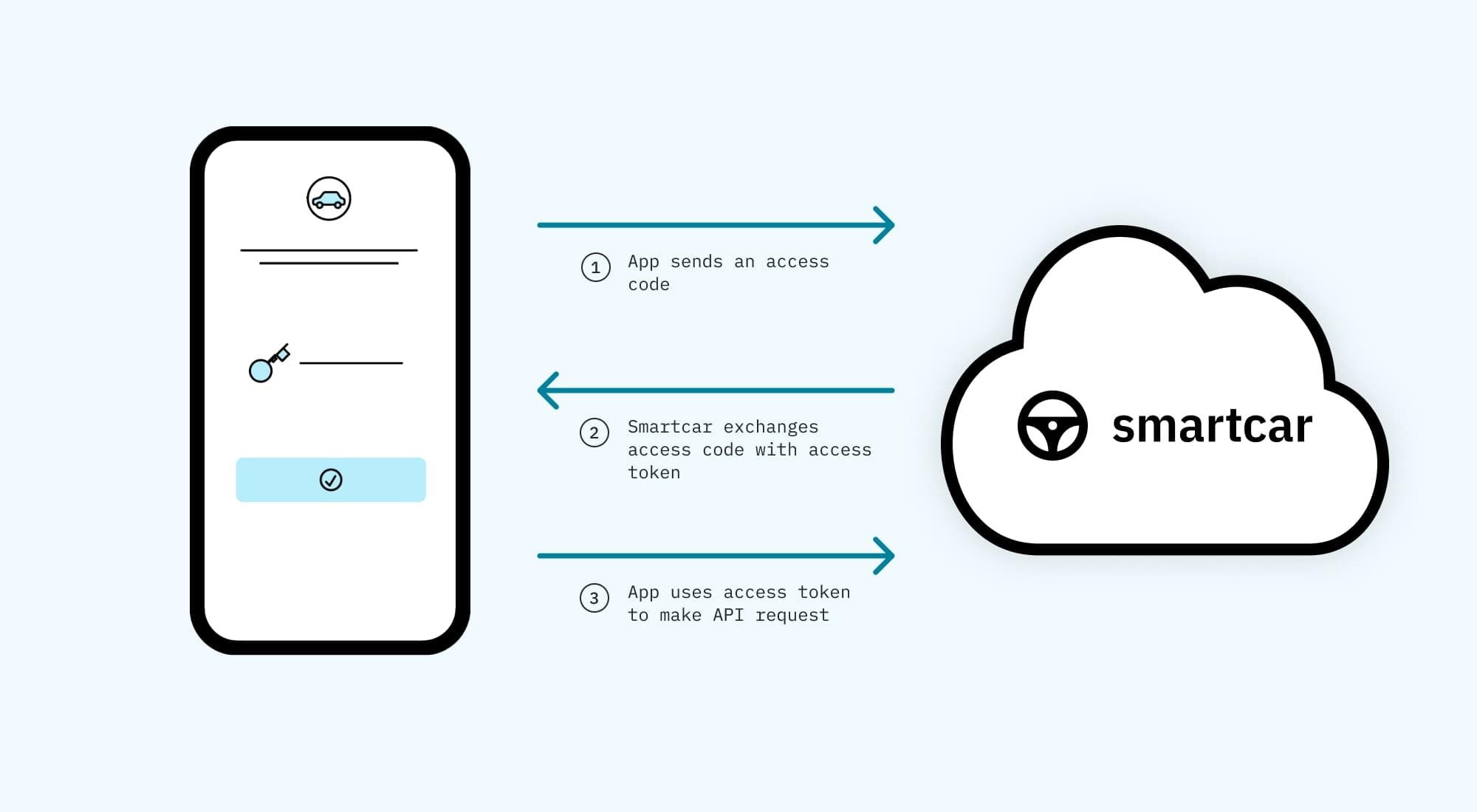Managed charging programs are being rolled out across the country to reduce the strain on electric grids. Utilities today are exploring different ways to meet program goals, one of them being partnerships with API platforms to accelerate data collection and driver enrollment.
The use of vehicle telematics isn’t new in the electric vehicle (EV) industry.
97% of EVs are connected vehicles with built-in 4G or 5G cellular modems, and businesses and local governments are using connected car data to solve the challenges of mass EV adoption. Managed charging is no exception.
2030 targets for EV adoption have utilities rushing to the drawing board. Soon, the grid will feel the impact of millions of EV owners plugging in to charge during peak hours.
Without active load control, electricity blackouts will be the new normal.
Utilities need extensive EV data and infrastructure interoperability to implement successful managed charging programs. An agile data ecosystem across different services and devices — including EVs — makes programs easier to scale and customize, especially if 67% of utilities are planning to roll out a new program within the next two years.
Here’s how APIs can power the managed charging ecosystem so utilities can improve data collection, customer education, and energy program roadmaps.
First, what is managed charging?
Utilities, DERMS software and virtual power plant software use EV managed charging to shift EV charging activity to accommodate factors like grid demand, time-of-use (TOU) electricity rates, and the availability of renewable energy sources. For example, Bidgely is a DERMS platform that works with utilities to gain visibility into resident’s EV charging patterns. With an EV API, residents can manage charging by enrolling in a utility program that actively schedules charging sessions during hours that are less expensive, carbon-intensive, and strenuous to the grid.
What is the difference between unmanaged and managed charging?
Unmanaged charging puts power grids at risk of unbalanced power supply and demand. If everyone was charging their EVs at night, this adds more stress to grids, especially if they’re already overloaded by demand during extreme weather. But imagine if this EV charging demand could instead be funnelled to hours when there is excess renewable energy production and lower rates.
It’s a win-win for consumers and energy retailers.
A study by the California Energy Commission found that shifting 20% of EV charging loads away to a different time or adding 30% of EV charging loads to a more optimal hour can save $56 per vehicle per year in grid electricity supply costs.
“Studies show that managing EV charging in an intelligent manner can save nearly 70% of the costs of new utility grid infrastructure, literally saving tens of billions of dollars,” Bill LeBlanc, Chief Catalyst at Rolling Energy Resources tells us.
Utilities can manage charging in two ways — with passive or active behavioral shifting efforts.
- Passive managed charging: Relies on behavioral nudges that require customers to take action themselves. For example, utilities can encourage customers to shift their changing patterns with incentives and discounted rates. These programs then alert customers using an application to remind them when its time to plug or unplug their electric vehicle.
- Active managed charging: Uses software to proactively shift an EV charging session based on real-time grid conditions without any customer intervention. An EV API unlocks this capability for managed charging progams, allowing customers to consent to a program starting and stopping a charging session and setting charge limits.
A good managed charging program starts with good data
First, programs need a deep understanding of mass EV behavior within a utility territory — like when and where they’re being charged, how much energy is used on an average day, and how to automate and predict load control intervention. Since utilities are relatively new to transportation electrification efforts, they need all the data they can get to do things right.
For this reason, some utilities are partnering with software providers to elevate data quantity and quality.
Stacy Noblet, Vice President of Transportation Electrification at ICF, says reaching EV adoption targets require immense coordination and collaboration to build the right infrastructure for passenger vehicles and fleets.
“We're seeing a lot of really cool announcements from companies that are collaborating, whether it's the automakers and the charging providers, or different software providers with hardware, [there’s a lot of] mixing and matching,” Noblet adds.
The EV charging space has seen disruption by many emerging innovative players in the software and hardware space. Utilities have been around for a very long time, but Noblet says there’s an opportunity for them to be just as new and groundbreaking as any emerging market entrant.
“[Innovation] doesn’t need to be a flashy company, but it can be a new and much more focused offering from an organization that’s been around for ages at this point.”
— Stacy Noblet, VP of Electrification Transportation at ICF
State agencies and local governments have been working with API partners to help utility territories conduct advanced analysis and forecasting on EV data. This form of collaboration between new and existing players in the electric vehicle ecosystem can benefit EV managed charging programs in the following ways:
🔢 Faster data collection across EV makes and models
With an API, program partners can get connected car data directly from vehicles without third-party electric vehicle service equipment (EVSE). A standardized platform for EV APIs lets drivers across different vehicle brands connect their car data to apps with a simple integration. This takes away the hassle of technical maintenance behemoths and complex hardware installation for utilities and drivers. This is how demand response firm, Rolling Energy Resources, uses APIs to provide utilities and local agencies with extensive oad research and charge management analysis — like when people charge, where they charge, and how much energy is consumed across a variety of EV brands in a territory.
🕹 Actionable integrations for real-time load management
Beyond data collection, car APIs also power event-based action. Utilities can see a vehicle’s state of charge and automate active load management by remotely starting and stopping charging. This helps curtail use during peak hours or shift use to hours with more renewable energy generation. Optiwatt, an EV charging mobile app, uses this API functionality to give customers a “set it and forget it” charging schedule that automatically kicks in when energy is less in-demand and costs are lower.
How APIs boost the efficiency of managed charging programs
An exceptional customer experience ensures the success of any new consumer-facing utility program — and the flexibility of APIs helps programs get there. According to SEPA’s State of Managed Charging in 2021 report, utilities are motivated to roll out managed charging for three primary reasons:
⚡ Help customers manage electricity use
💸 Avoid higher cost periods of energy supply
🤝 Increase customer engagement

The report highlights Silicon Valley’s GridShift program, which defines customer engagement and savings as key program success factors. In this program, APIs were used to verify customers’ utility information and automate emission reduction. With a hardware-agnostic approach, GridShift was able to reduce program drop-outs while maximizing enrollment across different groups of customers.
One of GridShift’s program partners is WattTime, which uses its APIs to conduct marginal grid emissions forecasts. "Some have wondered if transitioning to EVs could actually have a negative impact on the climate, since much of our power supply in the U.S. still comes from fossil fuels," says Christy Lewis, Director of Analysis at WattTime. "The good news is, our analysis shows driving an EV instead of a gas-powered car today helps lower emissions on any grid in the country, but there is also a massive opportunity to improve on those emissions savings."
WattTime helps partners in the EV industry roll out emissions-optimized smart charging with built-in intelligence that provides insight into how clean electricity is during use. "This means, not only can we make the EV transition happen, we can also make sure it's a transition that helps us reach our climate goals faster," Lewis tells us.
You can hear more on how APIs work together to optimize cleaner EV charging in Smartcar’s joint webinar with WattTime.
“There are absolutely the business-specific sensitivities around sharing information, but there is a sense that the rising tide raises all ships, and if you can get it right, it’s going to benefit the industry as a whole.”
— Stacy Noblet, VP of Electrification Transportation at ICF
Utilities can work with even higher efficiency gains if emission reduction automation works in tandem with real-time charging data pulled directly from EVs without dependency on EVSEs. Vehicle APIs can accelerate programs by:
📈 Increasing program participation
Smartcar’s API is compatible with over 62 EV models across 18 brands. Programs can easily introduce more drivers without having to worry about EVSE installation. Easier access to a wide range of EV data enriches load research with a holistic look at behavioral data, which helps utilities serve more participants with better program designs.
📱Simplifying customer enrollment
Vehicle telematics reduces friction in customer enrollment by omitting the installation of compatible smart charging hardware. A software-driven approach also helps participants manage and measure savings and incentives through a mobile app. This shorter onboarding and learning curve means more opportunities for utilities to focus on scaling marketing efforts and expanding customer education on the benefits of new offerings.
💡Personalizing programs at scale
Utilities and their partners can ensure long-term success with better visibility of market needs and the agility to respond to those needs with new offerings. Some territories will benefit more by providing both active and passive offerings to customers, while others may find their data more suited for one approach over the other. Regardless, APIs give programs the flexibility to scale or shift volumes and types of data as required.
How an API retrieves EV charging data
Each vehicle brand has its own unique API, each with its own set of endpoints and responses. Third-party developers who want to integrate with multiple vehicle brands themselves often work with fragmented APIs that need to be built and managed individually. This requires a significant, long-term investment, in cost and in-house bandwidth for API maintenance and improvement as programs scale or grow in complexity.
A universal platform for EV APIs is a centralized set of software intermediaries that allow applications and vehicle brands to talk to each other. Here’s how Smartcar’s API helps utilities communicate with EVs.
Step 1: Standardization

Smartcar’s platform does the heavy lifting of standardizing the APIs of 24 (and counting!) brands so developers get work with consistent error codes, SDKs, documentation, and data quality validation. For more granular data on select brands, we also provide an extended list of brand-specific endpoints.
“Smartcar gives us the peace of mind that a team of developers is working to maintain our access to EVs. This allows us to focus on our true value-add — effectively integrating EVs into the electric grid.”
— Scott Dimetrosky, CEO and co-founder of Rolling Energy Resources
Step 2: Authorization
All requests made to Smartcar require an access token. The access token gives apps a secure way to make the API request, authorize connectivity to a vehicle, and then interact with that vehicle. Token management is another area that apps don’t have to worry about as it’s built into our API offerings.

Step 3: Authentication
Before vehicle owners begin sharing data, they’re brought through our OAuth2 authentication flow, Smartcar Connect.
Smartcar Connect is the only touchpoint a vehicle owner has with Smartcar, but it’s an incredibly important one. A customer may drop off a managed charging program’s onboarding process if they are unsure about their vehicle’s connectivity, are concerned about data privacy, or if onboarding instructions are difficult to understand. Our flow was designed to mitigate this with three simple steps: select a car brand, sign in to a connected services account, and provide consent to shared data.

Step 4: Collection
A vehicle owner only needs to sign in once and they’re good to go!
Apps can automate data retrieval at regular intervals through our event webhooks, giving utilities and program participants peace of mind to optimize charging with less manual work.
To build or to buy?
A successful hardware-agnostic managed charging program has many moving parts — but tackling these complexities as a joint effort has the potential to yield higher returns. Utilities have the option to work with existing solution partners instead of building new data collection infrastructure from the ground up.
If your business is a utility or utility partner looking to integrate directly with EVs, consider the following factors when deciding to build or buy vehicle APIs.
If you answered “no” to all these questions, then you’ll likely benefit from a connected car developer platform.
Access our whitepaper to learn more about Smartcar’s solutions for managed charging and a complete list of endpoints and benefits🔋
Vehicle brands, logos, and model names belong to their respective trademark holders and do not indicate endorsement or affiliation with Smartcar.




.jpg)

